If you're waking up with sore muscles, restless sleep, or lower back pain, your mattress might not be the problem it could be the lack of the right foam mattress overlay. A mattress overlay, also known as a mattress topper, is a simple yet powerful solution that can completely change how your body feels after a night's sleep. Whether you're trying to soften a firm mattress, increase support, or improve pressure distribution, the right foam overlay can make all the difference. But not all foams are created equal.
Foam overlays come in various densities and firmness levels and choosing the wrong one can result in discomfort or even worsen existing issues. Understanding foam density and support ratings will help you select the most suitable overlay for your needs, whether you’re sleeping on a caravan bunk, a guest room bed, or your main mattress at home.
What Is a Foam Mattress Overlay?
A mattress overlay is a removable foam layer placed on top of your existing mattress. It adds an extra layer of cushioning, changes firmness levels, and adapts your bed to your specific comfort preferences without needing to buy a new mattress. Overlays are especially beneficial for:
- Prolonging the lifespan of an aging mattress
- Adjusting mattress firmness without replacement
- Reducing back, shoulder, or hip pressure
- Enhancing temperature regulation and breathability
- Customizing support for different sleep positions
Depending on the type of foam used, overlays can offer softness, firmness, or pressure-relieving properties tailored to each body type.
Why Foam Density and Support Matter
The two most important aspects when choosing a mattress overlay are foam density and support level. While “soft” and “firm” may sound subjective, density is a measurable value (usually kg/m³) that directly influences how the foam performs over time. Low-density foam is more affordable and plush, but wears down faster. High-density foam offers greater support, durability, and resilience ideal for daily use or orthopedic needs.
Choosing the wrong density can lead to:
- Sagging overlays that lose shape quickly
- Poor spinal alignment and disrupted sleep
- Inadequate pressure relief for joints or sensitive areas
We’ll break down each type of foam overlay in this guide from soft low-density foam overlays to very firm orthopedic foam sheets so you can confidently select what’s best for your unique sleeping style.
For a deeper understanding of these quality factors, check out our guide on why high-quality foam matters for comfort and durability. It breaks down what makes premium foam a smart investment.
Understanding Foam Density: What It Really Means
When choosing the right foam mattress overlay, foam density is the single most important specification to understand yet it’s often misunderstood. Many people confuse density with firmness, but the two aren’t the same. Foam density refers to how much raw material is used per cubic meter (kg/m³) and gives insight into how durable, supportive, and long-lasting the foam will be.
A higher density foam contains more material packed into each cubic meter, which generally means:
- Greater support
- Improved pressure distribution
- Better shape retention over time
- Higher durability and resistance to sagging
What Do the Numbers Mean?
Foam density is measured in kilograms per cubic meter (kg/m³). Here’s a quick guide to help decode those numbers:
| Density (kg/m³) | Description | Ideal For |
|---|---|---|
|
<20 |
Very Low Density |
Temporary use, kids’ play mats, occasional cushions |
|
20–29 |
Standard/Entry-Level Density |
Budget overlays, spare beds |
|
30–39 |
Medium to High Density |
Everyday use, moderate support |
|
40+ |
Premium/Orthopedic Density |
Long-term use, firm support, back relief |
For example, the 16-110 Standard Low-Density Foam Sheet (Soft) is a popular choice for lightweight or temporary mattress overlays, while the 31-190 Premium High-Density Foam Sheet (Medium-Firm) is ideal for long-term back support and stability.
Density vs. Firmness: Not the Same
It’s a common misconception to think that foam density automatically equals firmness but they’re actually two distinct characteristics.
- Density tells you how much material is packed into the foam (measured in kg/m³) and affects durability, support, and resilience.
- Firmness, on the other hand, refers to how soft or hard the foam feels when you lie on it a subjective comfort rating.
For instance, you can have a low-density foam that feels firm initially but breaks down quickly. Alternatively, a high-density foam might feel soft and plush but retain its shape and support much longer. That’s why it’s important to look beyond feel and check the actual density rating when selecting a mattress overlay.
If you're unsure where to begin, consider browsing our curated foam range that balances both density and firmness:
- For soft, entry-level overlays, the 16-110 Standard Low-Density Foam Sheet (Soft) offers a gentle, plush feel ideal for short-term comfort upgrades or guest beds.
- If you need everyday resilience with balanced support, the 30-130 Premium High-Density Foam Sheet (Soft-Medium) provides a cozy surface with longer-lasting performance.
- Looking for a firmer solution? The 31-190 Medium-Firm and 31-320 Very Firm foam sheets are excellent for orthopedic support, pressure relief, and back sleepers.
For a more in-depth comparison of foam characteristics and how they relate to real-world comfort, we recommend reading our guide: How to Choose the Right Foam for Your Project: A Comprehensive Guide. Understanding the difference between density and firmness helps you make informed, long-term decisions especially when customizing your sleeping surface to fit your exact needs.
Different Foam Types Used in Mattress Overlays
Once you understand foam density, the next step is knowing the types of foam available because not all foam is created equal. Different foam materials offer unique combinations of support, breathability, softness, and durability. Choosing the right foam type ensures your mattress overlay delivers on comfort and performance. Let’s break down the most common types of foam used in overlays and when to choose each.
1. Premium High-Density Polyurethane Foam
This is the gold standard for overlays that need to last. High-density polyurethane foam offers:
- Excellent support for spinal alignment
- Long-term durability with minimal sagging
- Resistance to body impressions
- Customizable firmness levels
If you're seeking a foam that holds its shape and supports your body consistently, check out:
- 31-190 Premium High-Density Foam (Medium-Firm)
- 31-320 Premium High-Density Foam (Very Firm)
- 29-400 Premium High-Density Specialty Foam (Very Firm)>
These are ideal for people with back issues, heavier body weight, or orthopedic requirements.
2. Medium-Density Foam
This foam balances softness with light support. It’s ideal for:
- Guest rooms or occasional use
- Children’s beds
- Overlaying firm mattresses for a touch of plushness
Great options include:
3. Low-Density Foam
Low-density foam is budget-friendly and suitable for temporary or low-use applications. It offers immediate softness but compresses quickly under daily use.
Try the 16-110 Standard Low-Density Foam Sheet (Soft) for:
- Light sleepers
- Campervans or occasional bunk use
- Lightweight overlay comfort
4. Reticulated Outdoor Foam
Designed for superior airflow and moisture resistance, reticulated foam is perfect for outdoor use, tropical climates, or people who sleep hot.
The Dryflow Reticulated Outdoor Foam Sheet (Firm & Waterproof) allows water to pass through freely, making it mold- and mildew-resistant.
Perfect for:
- Hot climates or humid regions
- Boat or caravan bedding
- People who sweat during sleep
5. Specialty Foams: Rigid & Polyethylene
Not usually used for comfort overlays, but still worth noting:
- Rigid Polyurethane Foam Sheets: Best for structural support beneath a foam layer.
- Polyethylene Foam Rolls (IXPE): Used as underlays or for impact resistance. Great for layering beneath a soft overlay to add durability.
Choosing between foam types can feel overwhelming, especially when you're trying to balance comfort, support, and long-term performance. If you're unsure which material will best suit your body and sleep habits, we recommend diving into our expert resource: Why High-Quality Foam Matters for Comfort and Durability.
This guide breaks down how different foam grades influence not only the feel of your mattress overlay but also how it performs over time from resistance to sagging and body impressions, to breathability and structural integrity. It’s an essential read if you’re serious about investing in better sleep and want your foam overlay to deliver lasting value.
Firmness Levels Explained: Soft, Medium, or Firm?
When choosing the perfect foam mattress overlay, firmness plays just as important a role as density or type. The right firmness level can make the difference between waking up refreshed or stiff and sore. But what exactly do we mean by "soft," "medium," or "firm" and which one is best for you?
Let’s explore how firmness affects comfort and support, and how to choose based on your sleep style and body needs.
Soft Foam Overlays: For Plush Comfort
Soft overlays are typically chosen by:
- Side sleepers, who benefit from pressure relief at the shoulders and hips
- Lightweight individuals, who don’t sink deeply into the foam
- People with arthritis or joint sensitivity, looking for less impact on pressure points
Soft foam provides a cradling feel that contours to your shape. However, it's not ideal for those needing structured support, as it can bottom out quickly under heavier weight. Recommended Product:
- 16-110 Standard Low-Density Foam Sheet (Soft) – An affordable and gentle choice for light-use overlays or temporary beds.
Medium Firmness: The Balanced Option
Medium or soft-medium overlays strike a balance between contouring comfort and stable support. Ideal for:
- Back sleepers, who need lumbar support with some give
- Couples, with different sleep styles
-
Everyday use overlays that won’t compress quickly
This level suits most people unless there’s a specific medical or comfort need for a firmer or softer option. Recommended Products:
Firm & Very Firm Overlays: For Maximum Support
Firm overlays are ideal when support is more important than softness. They are often preferred by:
- Stomach sleepers, who need a flat surface to avoid spinal misalignment
- Heavier individuals, who need a foam that resists deep compression
-
People with back pain, seeking a stabilizing surface for posture correction
Firm foam doesn’t allow for much sinking, which some people find more restful. Recommended Products:
- 31-190 Premium High-Density Foam Sheet (Medium-Firm)
- 31-320 Premium High-Density Foam Sheet (Very Firm)
- 29-400 Specialty High-Density Foam Sheet (Very Firm)
If you're still unsure which foam firmness or density best matches your unique sleep habits, pressure relief needs, or support preferences, don’t worry you’re not alone. Choosing between soft, medium, and firm options can be confusing, especially when every body and sleep position is different.
To help clarify things further, we recommend diving into our in-depth article, How to Choose the Right Foam for Your Project: A Comprehensive Guide. This guide breaks down the characteristics of different foam types, how they respond under pressure, and which ones work best for various applications—from bedding and cushions to DIY builds and commercial use.
By understanding how density, firmness, and compression ratings work together, you'll feel more confident in selecting the right foam overlay that truly aligns with your comfort goals and physical needs. Whether you’re building a custom mattress topper or simply upgrading your current sleeping surface, this resource is a must-read for making an informed, long-lasting decision.
Matching Foam Density & Firmness to Your Body Type
When it comes to sleep comfort and support, one size does not fit all. Your body type — including your weight, height, and posture — plays a key role in determining the ideal foam density and firmness for your mattress overlay. Choosing a foam that suits your unique build helps distribute body weight evenly, reduce pressure points, and promote proper spinal alignment.
Lightweight Sleepers (Under 60kg)
What works best:
- Low to medium-density foam
- Soft or soft-medium firmness
Lighter individuals don’t compress foam as much, so a softer surface is often more comfortable and effective. Overlays that are too firm may feel stiff and won’t contour enough to the body, potentially causing restlessness or shoulder and hip discomfort.
Best options:
Average Weight Sleepers (60–90kg)
What works best:
- Medium to high-density foam
- Soft-medium to medium-firm firmness
This group typically has the most flexibility when choosing overlays. The key is finding a balance between support and comfort. Foam that is too soft may not offer enough lift, while very firm foam could feel unyielding.
Recommended overlays:
Heavier Sleepers (Over 90kg)
What works best:
- High-density or specialty high-density foam
- Firm to very firm firmness
Heavier bodies naturally compress foam more. If the density or firmness is too low, the overlay will bottom out, lose its shape, and fail to provide support. Firmer, denser overlays prevent excessive sinking and maintain spinal alignment throughout the night.
Top-performing products:
Pro Tip: Layering Foams for Tailored Comfort & Support
Not all sleepers fit into a one-density-fits-all solution. If you’re someone who needs both pressure relief and structural support, consider a layered foam setup. By combining a firmer foam base with a softer comfort layer on top, you can achieve a custom sleep experience that adapts to your body’s unique needs.
This approach is especially helpful for:
- Couples with differing firmness preferences
- Heavier individuals who need extra foundational support
- Side sleepers who want soft cushioning without losing back alignment
- Back or stomach sleepers who need core firmness but prefer a cushioned feel on top
For added support beneath your foam mattress overlay, consider using our Rigid Polyurethane Foam Sheets. These sheets are excellent for creating a stable, non-sagging foundation, especially if you're customizing your own sleep system or converting a non-standard bed base. Want even more versatility? Many customers layer a very firm foam sheet underneath a soft to medium foam sheet to create a dual-zone effect—firm where you need it, soft where you want it.
Curious how density affects long-term support and foam performance? Explore our expert breakdown in A Guide to Understanding EPS Foam Density. This guide explains how foam density correlates with compression strength, durability, and overall sleep comfort, helping you fine-tune your foam overlay selection with confidence.
Choosing the Right Overlay for Different Sleeping Positions
Your sleeping position is one of the most important factors to consider when selecting a foam mattress overlay. Whether you’re a side, back, or stomach sleeper, the overlay you choose should support healthy spinal alignment and relieve pressure where your body needs it most.
Here’s how to match foam type, density, and firmness to your preferred sleep position for optimal comfort and restorative rest.
Side Sleepers: Prioritising Pressure Relief
Key needs:
- Gentle contouring
- Pressure point relief (especially hips and shoulders)
- Medium to soft firmness
Side sleepers benefit from a mattress overlay that cushions the body’s curves while keeping the spine straight. Foam that’s too firm can create discomfort in the hips and shoulders, while one that’s too soft can let your body sink unevenly.
Best foam overlays for side sleepers:
Back Sleepers: Supporting Natural Alignment
Key needs:
- Even support from head to hips
- Moderate contouring
- Medium-firm foam with high resilience
Back sleepers need a mattress overlay that supports the lower back while allowing the shoulders and hips to rest comfortably. A balance of support and cushioning helps maintain the spine’s natural S-curve.
Recommended foam overlays for back sleepers:
- 31-190 Premium High-Density Foam Sheet (Medium-Firm)
- 31-320 Premium High-Density Foam Sheet (Very Firm)
Stomach Sleepers: Keeping the Spine Neutral
Key needs:
- Firm surface to prevent lower back sagging
- Minimal sink-in feel
- High-density, firm foam
Sleeping on your stomach puts more strain on the neck and lower back, especially if the mattress overlay is too soft. A firm, stable foam surface helps avoid spinal misalignment and muscle stiffness.
Ideal overlays for stomach sleepers:
- 29-400 Premium Specialty Foam Sheet (Very Firm)
- Rigid Polyurethane Foam Sheets for support layering under softer foams
Combination Sleepers: Versatile Comfort
If you shift between positions overnight, you’ll need a foam overlay that accommodates a wide range of movements without causing discomfort in any one position. Soft-medium to medium-firm foams with quick rebound are best.
Best for combo sleepers:
- 30-130 Premium High-Density Foam Sheet (Soft-Medium)
- Dryflow Reticulated Outdoor Foam (Firm & Fast-Drying) – A unique option if airflow and responsiveness are important to you
Foam Density vs. ILD (Indentation Load Deflection): What's the Difference?
When selecting a foam mattress overlay, it’s crucial to understand that density and firmness (ILD) are not the same thing. Many buyers assume that higher density automatically means firmer foam—but that’s not always true.
Both foam density and Indentation Load Deflection (ILD) play important roles in how a foam feels and performs. Understanding the difference between these two measurements will help you choose the right overlay for your comfort, support, and durability needs.
What Is Foam Density?
Foam density refers to how much material is packed into a cubic metre (kg/m³) of foam. It directly affects:
- Durability and lifespan
- Resilience and support
- Overall foam quality
Higher-density foam usually contains more raw material and air cells packed tightly together, making it more durable and supportive.
For example:
- 16-110 Standard Foam (Soft, Low-Density) – Entry-level, economical, but less durable
- 31-190 Premium High-Density Foam (Medium-Firm) – Long-lasting with consistent performance
- 29-400 Premium Specialty Foam (Very Firm, High-Density) – Maximum durability, ideal for heavy-duty or orthopedic applications
What Is ILD (Firmness)?
ILD stands for Indentation Load Deflection, which measures how much pressure (in Newtons or kgs of force) is needed to compress the foam by 25% of its height. ILD reflects how firm or soft a foam feels.
- Low ILD (10–20): Very soft feel, cushions the body
- Medium ILD (20–30): Moderate firmness for balanced comfort
- High ILD (30+): Firm or very firm support
Example comparison:
- A soft foam may have low density but also a low ILD
- A high-density foam can still feel soft if its ILD is low
- A firm overlay may have medium density but a high ILD
Why Both Matter
To choose the ideal foam mattress overlay, consider both:
- Density – for durability and support over time
- ILD – for initial comfort and body feel
Here’s how it plays out:
- High-density + low ILD = soft, durable overlay
- Low-density + high ILD = firm but less supportive
- High-density + high ILD = very firm and long-lasting
This is why we often recommend premium options like:
Want to understand why some mattress overlays retain their shape and comfort over time while others quickly wear out? The answer often comes down to foam quality. High-grade foam doesn’t just feel better—it supports your body more effectively, resists sagging, and offers superior durability.
To dive deeper into how foam quality directly impacts comfort, longevity, and value for money, we highly recommend reading Why High-Quality Foam Matters for Comfort and Durability. This guide explains how premium foam differs from lower-grade options and why investing in better materials pays off in the long run—especially for something you use every night like a mattress overlay.
Whether you're shopping for yourself or outfitting a commercial space, this article will help you make informed, performance-driven foam choices.
Top Foam Overlay Options at The Foam Company (With Use Cases)
At The Foam Company, we offer a wide variety of foam sheets and mattress overlays tailored to different comfort levels, body types, and functional needs. Whether you need soft cushioning for pressure relief or a very firm surface for orthopedic support, our curated foam range ensures you get the best match for your sleep style.
Below is a breakdown of our top-performing foam overlays, including real-life use cases and customer recommendations.
| Foam Type & Link | Best For | Key Features | Recommended Use Case |
|---|---|---|---|
|
Guest beds or kids' trundle beds, Lightweight users, Budget-friendly overlay needs |
Entry-level softness, Easy to cut and shape, Affordable with light comfort |
Great for temporary or occasional use, such as sleepovers or children’s beds where cost-efficiency and comfort are both important. |
|
|
Side sleepers, Average weight adults, Everyday mattress toppers |
Balanced softness & resilience, Ideal for sleep and seating, Durable with moderate support |
Perfect for side sleepers needing gentle pressure relief without sinking too deeply. Great for moderate support with a plush touch. |
|
|
Combination sleepers, Couples with shared beds, Long-term overlay use |
Soft-medium feel, Excellent recovery, Works for adjustable beds |
A great choice for multi-position sleepers or as a durable guest bed topper. Also ideal for couples sharing a mattress. |
|
|
Back sleepers, Athletes or lumbar-sensitive users, Motion-isolation needs |
Balanced firmness, Spine alignment support, Reduces partner movement |
Ideal for people needing extra back support or orthopedic alignment. Recommended by chiropractors and physios. |
|
|
Stomach sleepers, Orthopedic firmness, Solid, flat sleep surfaces |
Maximum firmness, High durability, Excellent for layering |
Great for users who require a firm sleeping base or want to layer for custom orthopedic builds. Very durable. |
|
|
Bariatric support, Clinical or aged care, High-performance overlays |
Ultra-firm, Minimal compression, High weight-bearing |
Commonly used in healthcare and aged care environments where hygiene, support, and longevity are key. |
|
|
Base layers, Mattress height adjustment, Custom structural support |
Rigid and supportive, Moisture and temperature resistant, Excellent for DIY builds |
Used under softer foams to add lift and structural support. Excellent for custom mattress designs or orthopedic stacking. |
|
|
Camping mats, Floor overlays, Portable sleep surfaces |
Water-resistant, Rollable and easy to store, Lightweight but durable |
A go-to option for campers, vanlifers, and travel setups where compactness and comfort matter. Ideal for outdoor environments. |
Caring for Your Foam Mattress Overlay: Maintenance & Longevity Tips
Investing in a quality foam mattress overlay is just the beginning how you care for it determines how long it will continue to provide comfort and support. Even the best foam materials can degrade prematurely if they’re not properly maintained.
Whether you’re using a soft overlay for comfort or a firm one for support, here are practical tips to help you maximise the lifespan and performance of your foam overlay.
1. Keep It Clean: Regular Spot Cleaning
Foam is porous, meaning it can absorb sweat, spills, and dust over time. To keep it fresh:
- Use a mild detergent and warm water for light stains
- Avoid soaking the foam—blot rather than scrub
- Always let it air-dry completely before reusing
- Consider using a washable cover to protect the overlay
If you’re using overlays outdoors or in damp areas, moisture management is especially important. For water-resistant foam solutions, check out the Dryflow Reticulated Outdoor Foam, which dries quickly and resists mildew.
2. Rotate and Flip When Possible
To avoid body impressions or uneven wear:
- Rotate your overlay from head to toe every 1–2 weeks
- Flip it (if double-sided) every month
- Use it on a flat and firm surface to maintain shape
3. Allow Ventilation
Foam overlays benefit from occasional air-outs:
- Let them breathe in sunlight for a few hours (but not too long—UV can degrade some foams)
- Avoid enclosing in plastic for long periods
- Use in rooms with good airflow to prevent odour or mildew buildup
4. Use Supportive Bedding Accessories
Pair your overlay with:
- A high-quality cover that protects from spills and allergens
- A slatted or ventilated base to prevent heat and moisture build-up
- Proper pillows to complement spinal alignment and foam function
If you're building a custom bed or support system, our Rigid Polyurethane Foam Sheets are ideal for base layers to prevent sagging.
5. Know When to Replace
Even premium foams eventually show wear. Watch for:
- Noticeable dips or body impressions
- Loss of support or comfort
- Changes in firmness or unusual odours
Most overlays last 3 to 7 years, depending on the density, usage, and care. Higher-quality overlays like the 31-320 Very Firm Premium Foam last much longer under regular use.
Final Thoughts: Making a Smart Foam Overlay Investment
Choosing the right foam mattress overlay is more than just picking soft or firm—it’s about understanding how density, support, and application work together to meet your sleep or comfort needs. Whether you're easing joint pressure, improving spinal alignment, or just making a firm mattress more bearable, the right foam overlay can dramatically improve your quality of life.
What You’ve Learned
In this guide, we’ve covered:
- The importance of foam density and how it affects comfort and support
- Key factors to consider when choosing a mattress overlay, like sleeping position, weight, and intended use
- A breakdown of popular foam options offered by The Foam Company, matched with real-life use cases
- Expert tips on how to care for your foam overlay to prolong its life
- Internal resources and product links to guide your purchase confidently
Why Choose The Foam Company?
When you buy from The Foam Company, you’re not just purchasing a piece of foam—you’re investing in:
- Australian-made, high-quality materials backed by expert manufacturing
- A wide range of premium density foams for every need—from soft overlays to orthopedic-grade firmness
- Custom-cut services and nationwide shipping
- Friendly customer support with real product knowledge
Take the Next Step: Shop Smart
Not sure where to start? Here’s a quick checklist to guide your selection:
Light sleeper needing pressure relief? Try our 30-130 Soft-Medium Foam Need orthopedic support? Choose 31-320 Very Firm Foam On a budget? Consider the 16-110 Standard Soft Foam Building a custom base? Use Rigid Polyurethane Sheets Sleeping outdoors or in humid environments? Go with our Dryflow Reticulated Outdoor Foam
Still confused about which density or firmness suits you best? We’ve got your back—explore A Guide to Understanding EPS Foam Density to dive deeper into density ratings and what they mean for support.
Ready to Buy?
Visit our full Foam Products Collection or contact our team for personalised advice. Your comfort is our priority.
Want to explore more foam-related solutions? Don’t miss our blog on How to Choose the Right Foam for Your Project to understand foam types beyond just mattresses—from packaging to furniture and beyond.


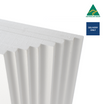
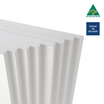
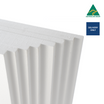
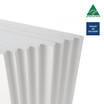
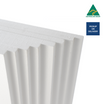
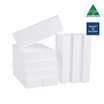
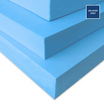
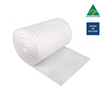
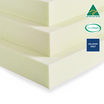
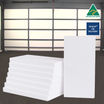
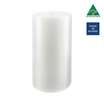
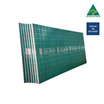
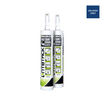

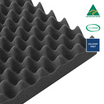
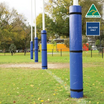
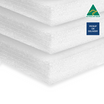
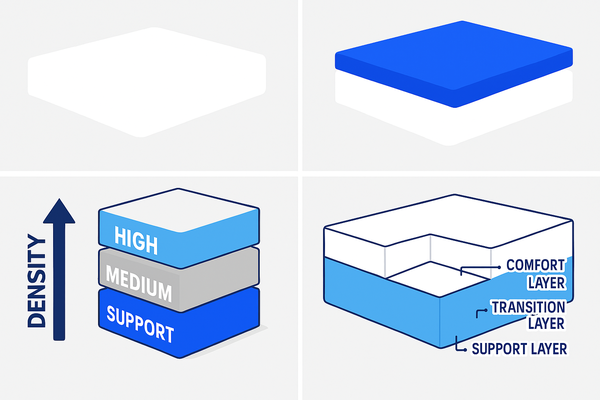


Leave a comment
This site is protected by hCaptcha and the hCaptcha Privacy Policy and Terms of Service apply.